Fuete y Verguilla
 By: Jannette Ramos García & Andrés (Andy) Maldonado Rivera
By: Jannette Ramos García & Andrés (Andy) Maldonado Rivera

Lionfish Spines

13 Dorsal Spines
2 Pelvic Spines
Posterior
Spines (non venomous)
3 Anal Spines

 By: Jannette Ramos García & Andrés (Andy) Maldonado Rivera
By: Jannette Ramos García & Andrés (Andy) Maldonado Rivera


13 Dorsal Spines
2 Pelvic Spines
Spines (non venomous)
3 Anal Spines
Afewmonths ago, Andrés “Andy” Maldonada, a conch fisher from El Combate of Cabo Rojo, invited me to his home to eat Lionfish. I was strongly intrigued, so that’s where I went, thinking how strange it was to ingest an invasive fish that we want to eliminate from our waters for its gluttony over the commercial species and for its fearsome venomous spines.
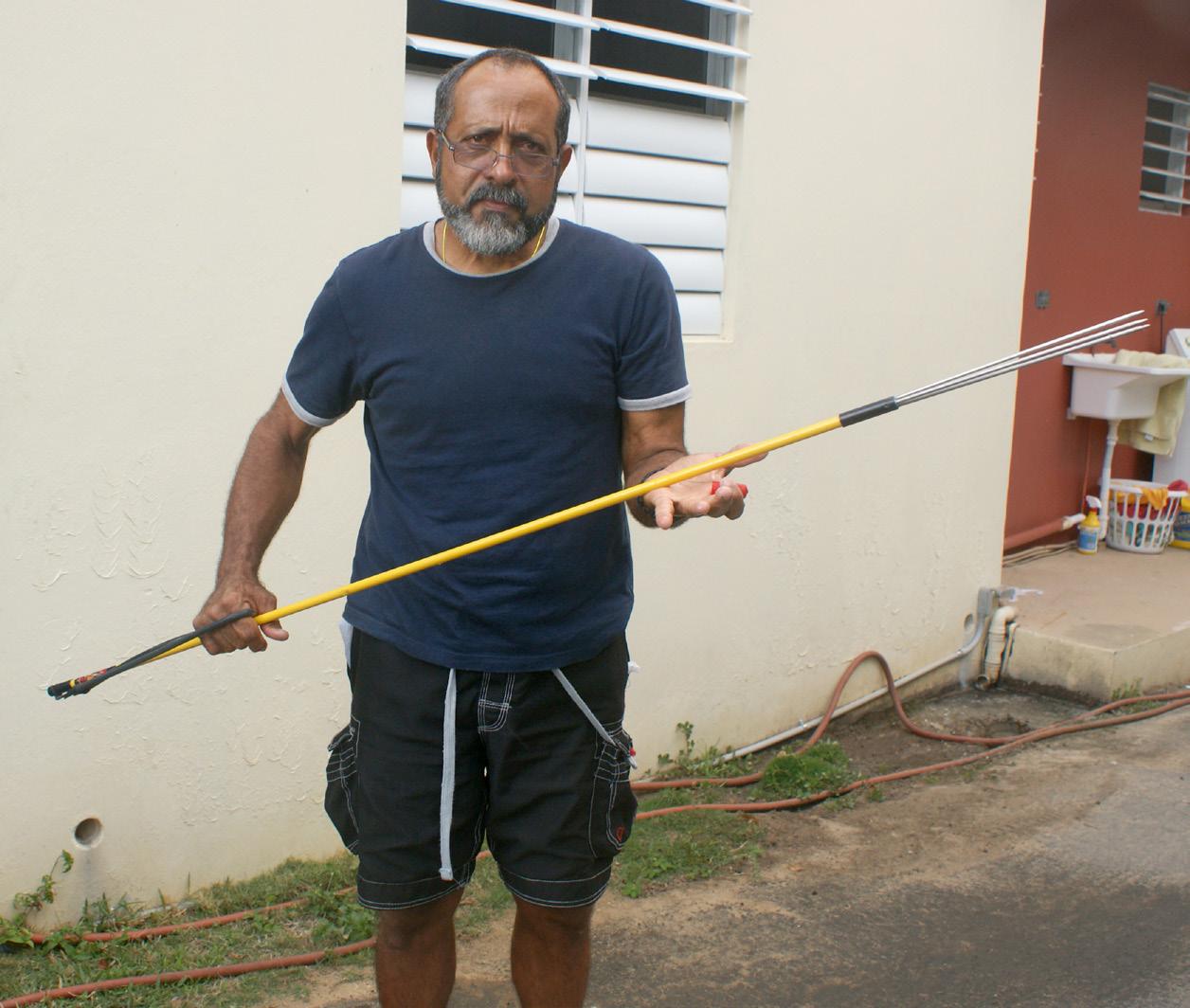
Each Lionfish pictured in this article was caught by Andrés Maldona. It is important to note that he demonstrated two distinct forms of how to cut the venomous spines. The first form takes place while still under water. Once caught, the fish is left hooked in the Hawaiian sling, the venomous spines are cut off and once finished, it is brought to the surface. Once out of the water and without its spines, the fish is harmless and easy to handle. The second way is performed once out of the water. We show you how to do it below.


Lionfish have venom stored at the tip of their spines. In total, they have 13 dorsal spines, 3 anal spines and 2 pelvic spines that must be carefully removed. The venom in lionfish spines remains active even after the fish is dead. Always use caution when removing them.
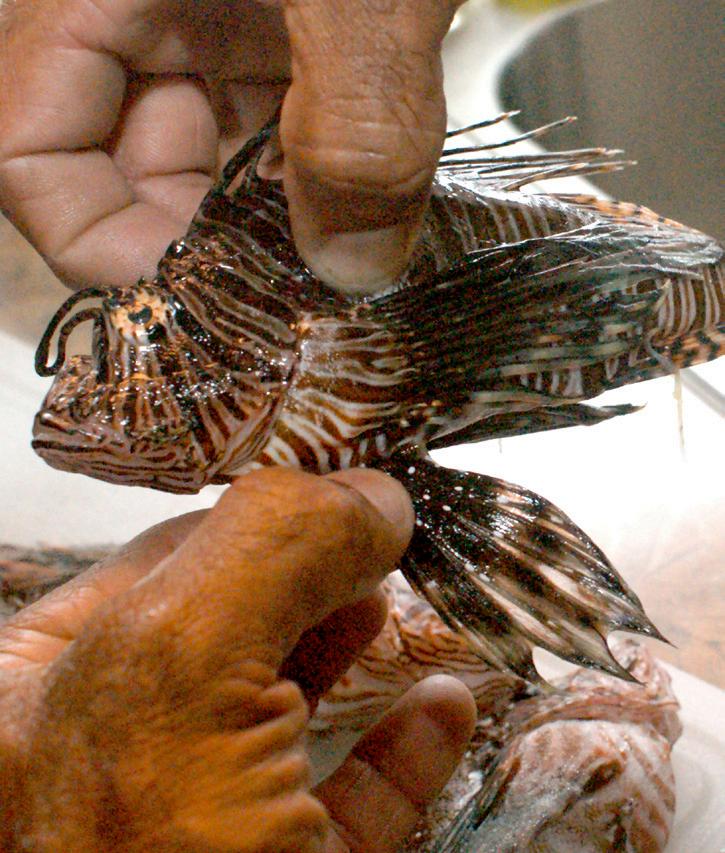

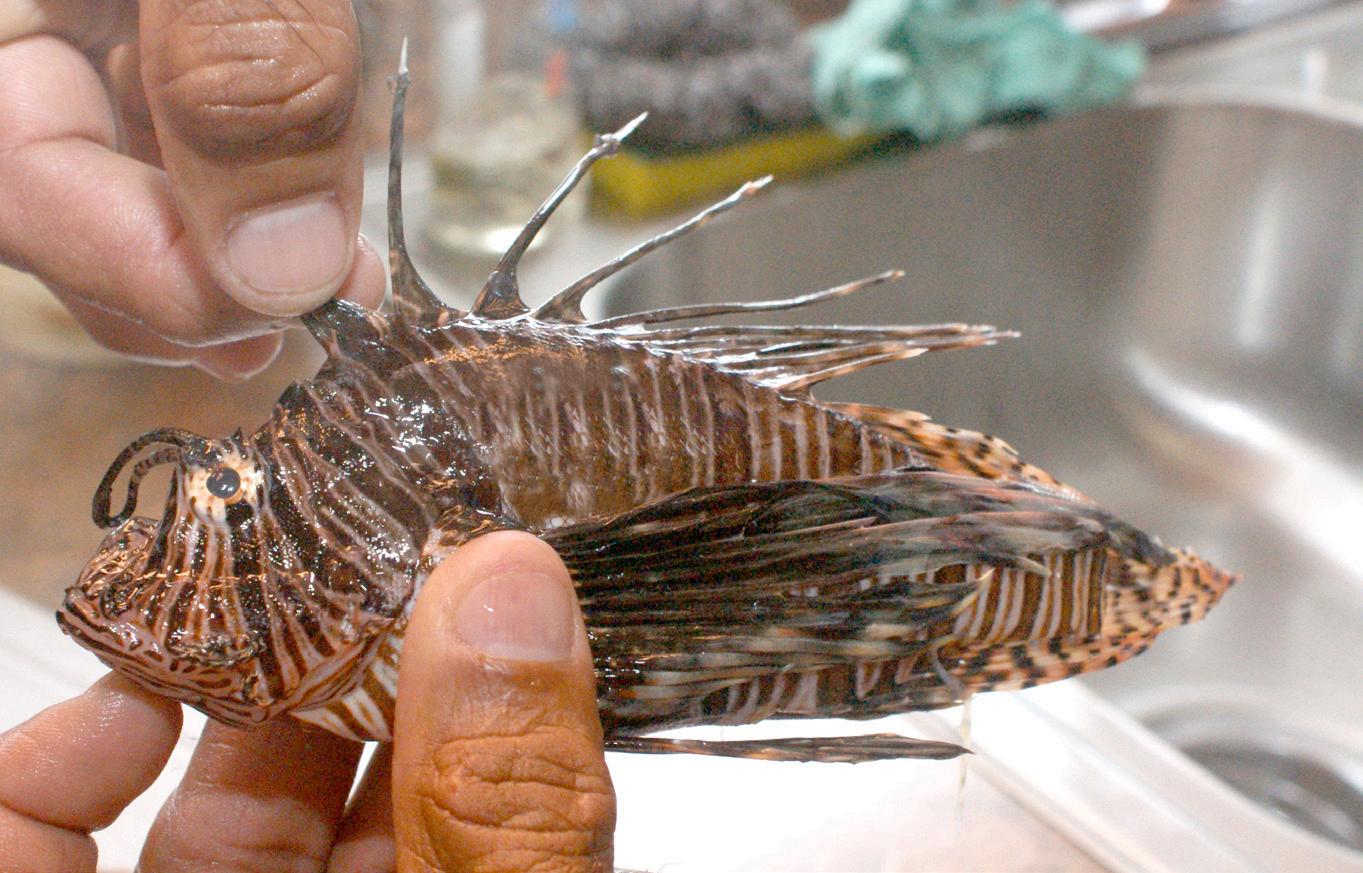
Dorsal spines
Spines

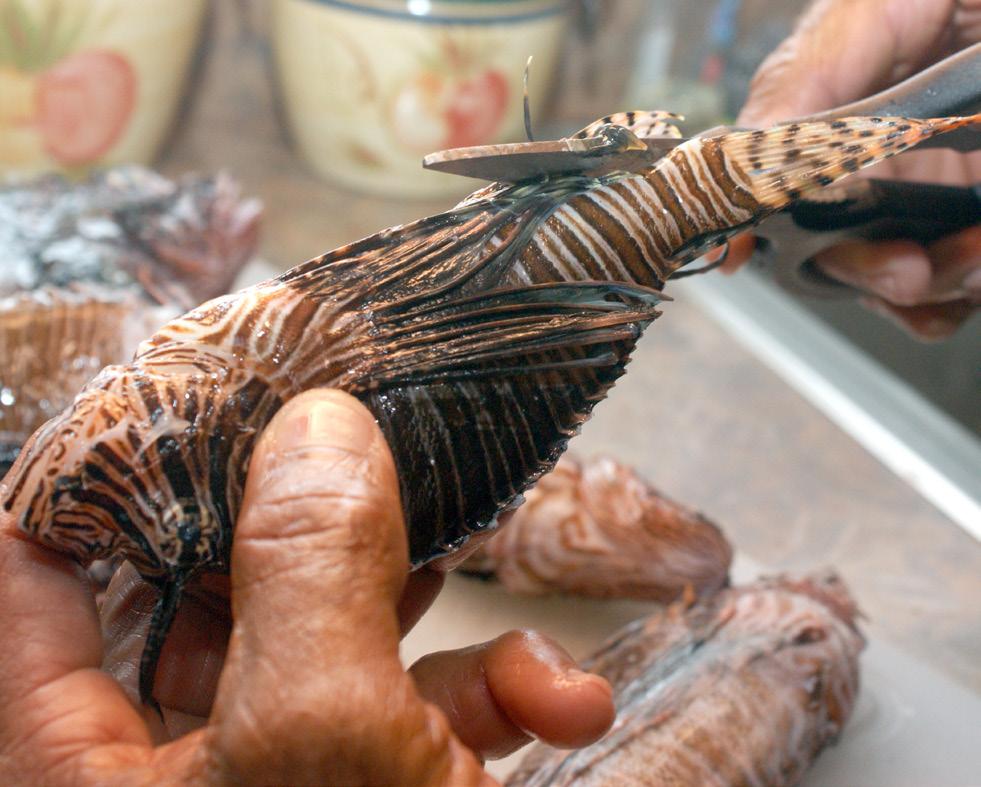


In this article, we visually demonstrate how to prepare it for consumption and how to cut its spines. All we need are a pair of kitchen scissors, a fish scaler, a knife and a lot of caution to avoid being stabbed.
Where Do You Cut the Spines?
Dorsal
Anal



When finished, the venomous spines can be collected with the same scissors with which they were cut.
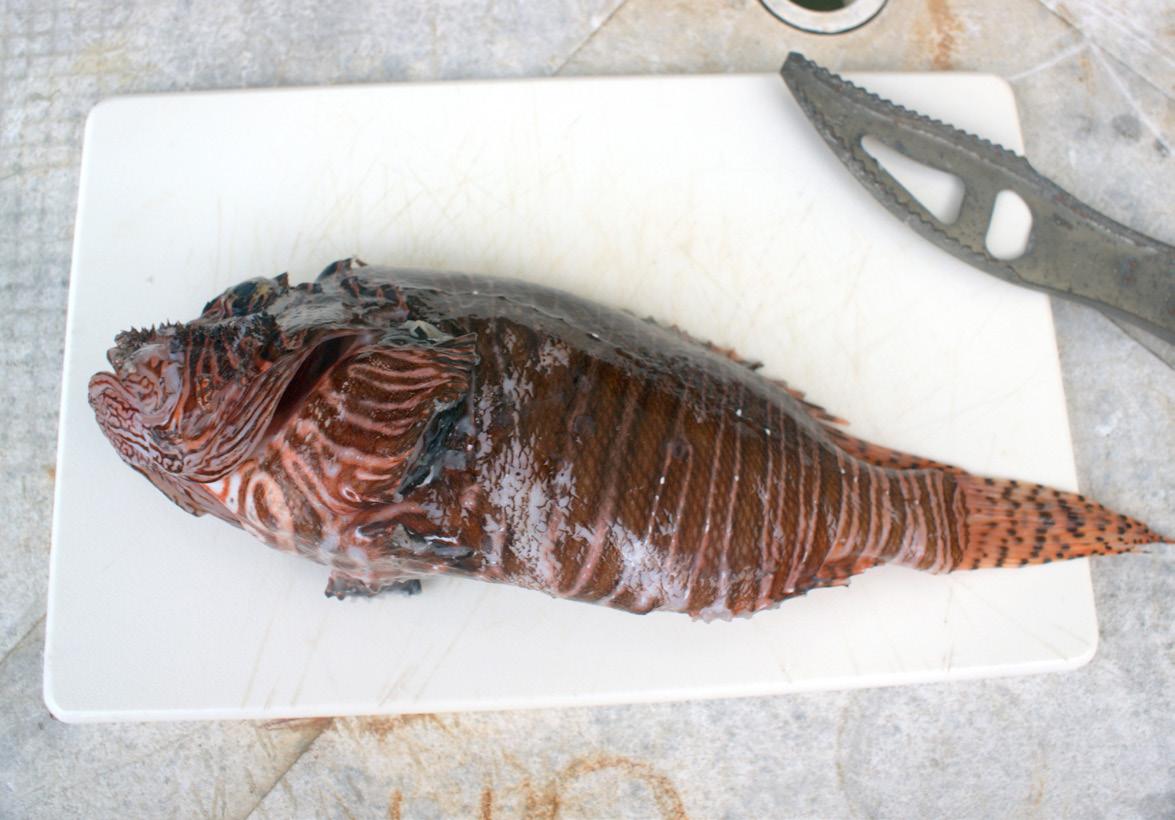


This is what it looks like when the spines are cut off. Then, it is scaled and gutted.
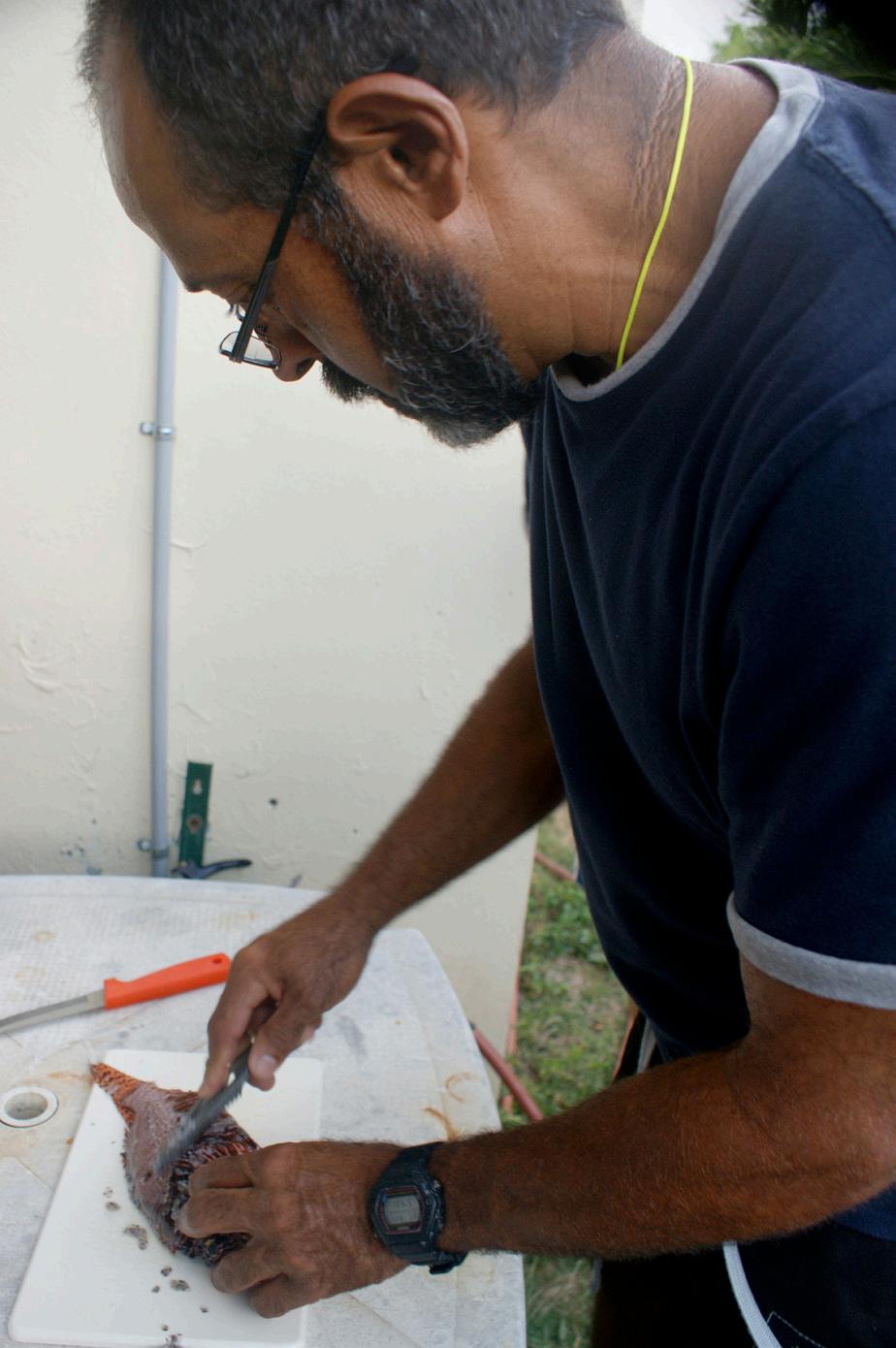


We season it with salt and it is ready for the frying pan!
We encourage you to fish and try Lionfish, which among other things: it has no closure nor quotas. After my gastronomic experience, of which “Andy” was part of by fishing, preparing and cooking this delicacy, I can assure you that it is simply, delicious!


• Identify the affected area.
• If the puncture was on a limb, elevate it. This decreases inflammation and pain.
• Wash the affected area.
• Remove any remaining spines from the lesion.
• Do not stop the initial bleeding. This releases some of the venom and helps to relieve the pain.
• Submerge the affected limb in warm water for 20 minutes.
• Apply topical antibiotic or antiseptic ointment on the area of the lesion.
• Go to an emergency room where anesthesia can be administered around and into the affected area. The use of lidocaine without adrenaline (epinephrine), 5 to 10 mg every 30 to 60 minutes.
https://www.drna.pr.gov/oficinas/informacion-basica-sobre-el-pez-leon-en-puerto-rico/
 Liza Flores, fisher from La Parguera.
Liza Flores, fisher from La Parguera.
Sea Grant’s mission is to conserve and sustainably use the resources and marine & coastal ecosystems of Puerto Rico. To achieve its mission, the program has research, education, and marine outreach projects.
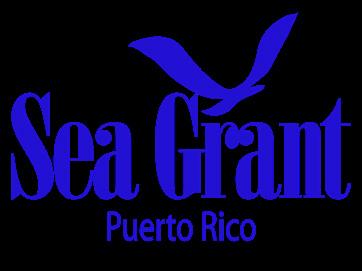
University of Puerto Rico Mayagüez Campus Call Box 9000 Mayagüez, PR 00681-9000
Tel: (787) 832-8045
Fax: (787) 265-2880
E-mail: fueteyverguilla@gmail.com seagrant@uprm.edu
Website: http://www.seagrantpr.org

CIEL is an interdisciplinary center for the study of coastal social processes. We pay attention to the relationship between humans and nature. We collaborate in management plans for nature and marine reserves. CIEL is funded by the College of Arts and Sciences, the Caribbean Coral Reef Institute, and the Sea Grant Program of the University of Mayagüez Campus.
https://cieluprm.weebly.com
This magazine has been produced with funds for improvements in extension services for fisheries (Fisheries Extension Enhancement Grant) from the Sea Grant Program.
This guide was published under the direction of Manuel Valdés Pizzini. It was supervised by Jannette Ramos García. The layout and graphic design were the work of Johanna Guzmán Castillo, Cynthia L. Gotay Colón and Jannette Ramos García. The cover photograph was taken by Michelle Schärer Umpierre. The article photos were taken by Jannette Ramos García and edited by Johanna Guzmán Castillo. The article is the product of the efforts of Jannette Ramos García and Andrés Maldonado. The text was edited by Mydalis M. Lugo Marrero. The printing was carried out by the Sea Grant Program’s Press, Communications and Publications Section, directed by Cristina D. Olán Martínez. The chief printer is Guillermo Damiani González. English translation by Stephanie Díaz Pérez.
 Rodrigo Irizarry, fisher from La Parguera.
Rodrigo Irizarry, fisher from La Parguera.